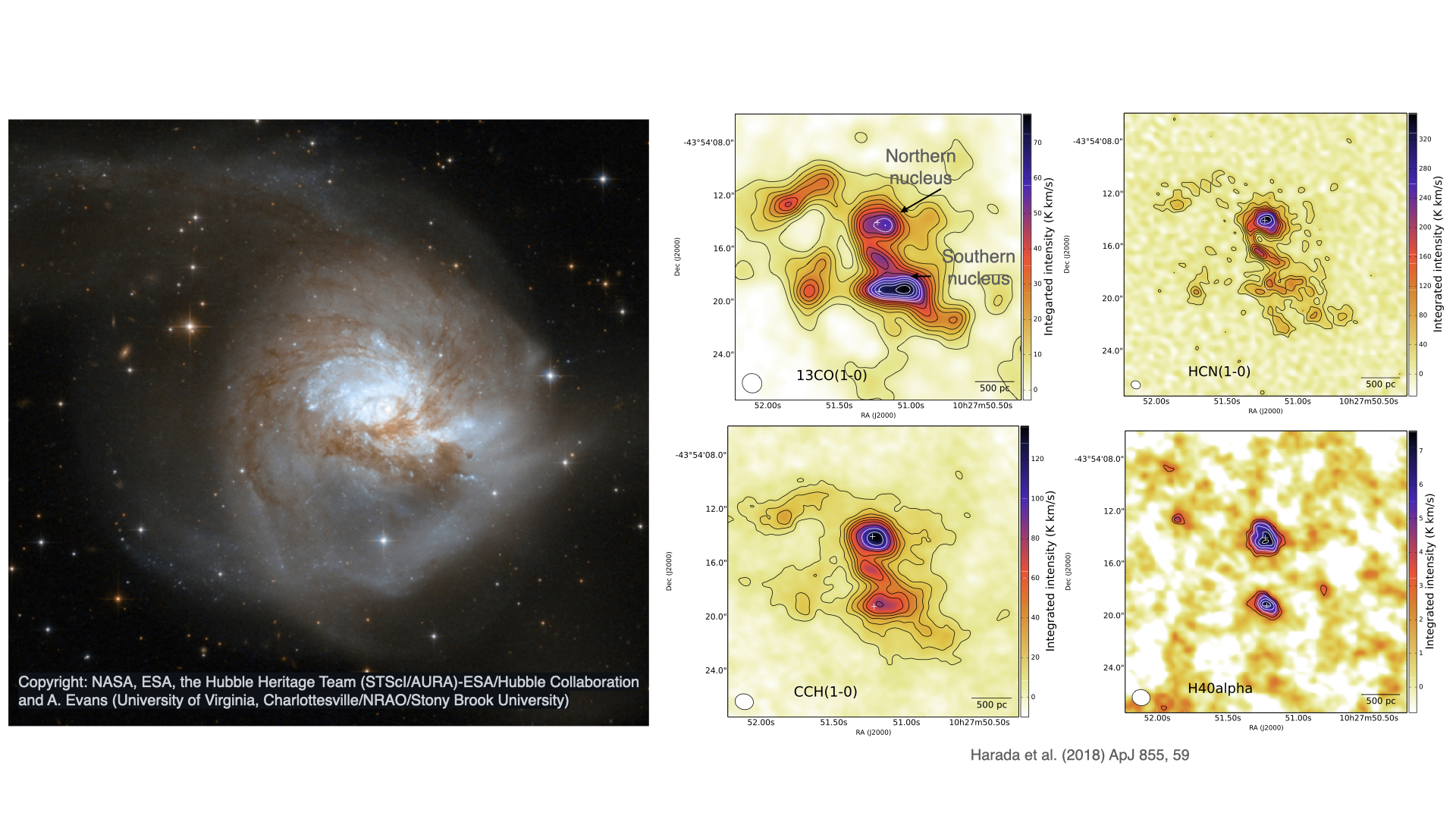
I am currently an assistant professor at Division of Science, National Astronomical Observatory of Japan. I also have a cross-appointment with the Astronomy Deparment of the Graduate University of Advanced Studies (GUAS/SOKENDAI). Interested students can work with me for a master's or Ph.D. course at SOKENDAI.
I work on galaxies with high star formation activities called starburst galaxies, or galaxies with active galactic nuclei (AGNs), galactic nuclei accreting mass onto the central supermassive black holes. If you look at the entire history of the Universe, the star formation activities and black hole accretion had their peak when the Universe was 2-3 Gyr old. Now at the age of 13.8 Gyr, the Universe has become less active. Despite the overall inactivity, some local galaxies still host starbursts and AGNs. Studying these galaxies locally in detail gives us a hint of how galaxies were back at the peak of their activities.
Gas, especially in the molecular form, is an essential component of these activities. Stars form in dense gas, where gas exists as molecules. Black holes also grow by "eating" gas. There is more molecular gas than atomic gas in the centers of galaxies, and this molecular gas component is the reservoir for future black hole accretion. The most commonly observed gas is carbon monoxide, which is a tracer of the molecular mass. Meanwhile, many more molecules have been discovered in the interstellar medium. By studying the compositions of these molecules, we can constrain the physical conditions of the interstellar gas. The study of various molecules in connection with astrophysical environments is called astrochemistry.
Starburst and AGN activities are expected to affect astrochemistry due to the UV-photons, cosmic rays, and X-rays occurring in these activities. It has been challenging to conduct astrochemical observations in external galaxies with high angular resolutions, but they are now possible thanks to Atacama Large Millimeter/submillimeter Array (ALMA). I currently work on astrochemistry of nearby galaxies using ALMA as well as computer simulation of astrochemical abundances. One of the most ambitious projects in extragalactic astrochemistry is an ALMA large program ALCHEMI, which studies the chemical compositions of a nearby starburst galaxy NGC 253. I am involved in this project as a co-PI.
 An example of a local starburst galaxy, NGC 3256. This starburst is triggered by two galaxies colliding into each other.
(Left) A Hubble image of NGC 3256. Copyright: NASA, ESA, the Hubble Heritage Team (STScI/AURA)-ESA/Hubble Collaboration
and A. Evans (University of Virginia, Charlottesville/NRAO/Stony Brook University) (Right) ALMA images of NGC 3256 with
various molecular tracers (Harada et al. 2018).
An example of a local starburst galaxy, NGC 3256. This starburst is triggered by two galaxies colliding into each other.
(Left) A Hubble image of NGC 3256. Copyright: NASA, ESA, the Hubble Heritage Team (STScI/AURA)-ESA/Hubble Collaboration
and A. Evans (University of Virginia, Charlottesville/NRAO/Stony Brook University) (Right) ALMA images of NGC 3256 with
various molecular tracers (Harada et al. 2018).